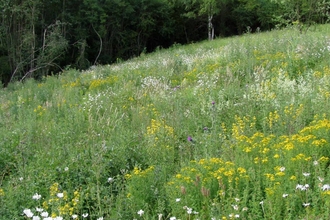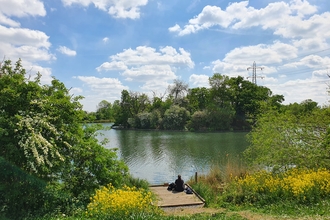
Photo credit: Andy Rouse/2020VISION
The sound of spring begins quietly at first, but as the season goes on, it rises to a crescendo as more wildlife voices join the chorus of new life. From just outside your window all the way to the depths of London’s nature reserves, the sounds of spring can be enjoyed by all throughout our city.
Birdsong and drumming woodpeckers
The increasing sound of birdsong as we head into spring is one of nature’s great symphonies, and certainly not one to be missed! As winter transitions to spring, the longer days stimulate the breeding behaviour of male birds, and they begin their musical campaigns: to defend breeding territory and attract a mate. Resident birds such as robins, song thrushes and great tits are some of the first to sing, and they later joined by migrant birds such as blackcaps and chiffchaffs.
Another tell-tale sound of spring, which can be heard throughout our woodlands, is the drumming of the woodpecker. Woodpeckers bang their bills repeatedly against trees, a behaviour which is sometimes misunderstood as woodpeckers searching for food or creating holes. In fact, woodpeckers drum for the same reasons that other birds sing – to defend their territory and attract a mate!
Amorous amphibians croaking
As the weather warms up, frogs and toads come out of hibernation and make their way to ponds and water bodies to breed. Migration to breeding ponds can start as early as the end of January, but variation in temperature can push this further into spring. The sight of frogs and toads gathered en masse in ponds is special enough, but the sound they make is something else!
Males of both species typically arrive at breeding ponds first, and this is when they begin their chorus of croaking to attract the attention of females and advertise their suitability as a mate. The deep purring croaks of amorous frogs is one of the magical sounds of spring. This hustle and bustle of activity is fleeting though, as once mating has taken place and spawn has been laid, the adults soon disperse.
The buzz of early insects
A familiar buzzing sound in early spring announces the emergence of our early pollinating insects, beginning with queen bumblebees. Queen bumblebees spend the winter underground in hibernation, rousing from their winter slumber in spring when temperatures rise. When they first emerge, they fill up on the nectar of early flowers to gain energy, before searching for a suitable nest site.
Warmer days invite the emergence of overwintering butterflies, fluttering around in search of early pollen. Some of our first to appear are the peacock (as early as February), red admiral, small tortoiseshell and brimstone. From April, non-overwintering butterflies such as the unmistakeable orange-tip are also on the wing.
As we move further into spring, London’s chalk grasslands come alive with a throng of buzzing insects - this sound of spring is not to be missed!











